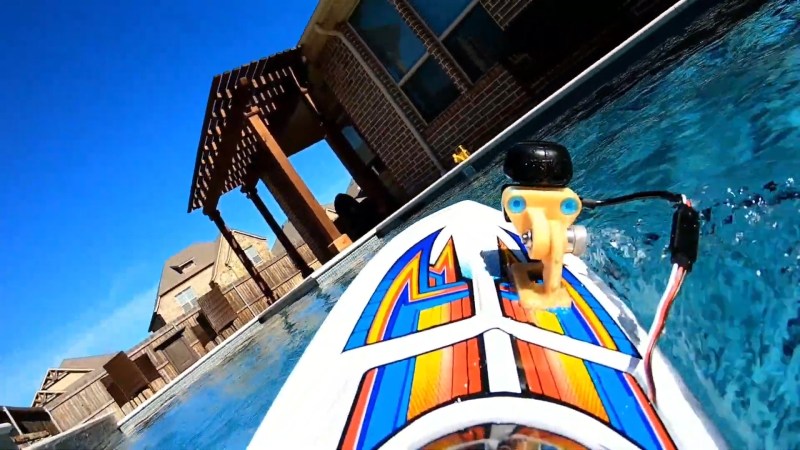First-person view technology has become hugely popular in the RC community, letting the user get a vantage point as though they were actually within their tiny scale vehicle. It can be difficult to get a good, clean video feed though, particularly in models that have a lot of drivetrain vibration. [Engineering After Hours] decided to tackle this problem with a simple vibration isolator design. (Video, embedded below.)
The first step is to analyse the vibration to get an idea of the frequencies that are most important to target. WIth that done, a simple 3D printed camera mount is designed with three flexible joints between the camera and the base which is rigidly coupled to the RC boat or car’s body. The modal analysis tools in Fusion 360 were used to get a rough idea of the frequency response of the system, helping to get things in the ballpark with a minimum of fuss.
The final design does help cut down on vibrations, though it is unable to counteract heavy vibration from driving on extremely rough surfaces. In these cases, [Engineering After Hours] recommends the use of a gimbal instead. Proper damping can be a godsend in many applications; bricks can make a huge difference for your 3D printer, for example.
















Certainly interesting. As we know, most video encoding schemes are not very good at filtering high frequency noise. Maybe this is something that could be looked at from a software side also? I wonder if GoPro’s “ultrasmooth” does something about that.
Interesting solution. Personally, I think a real-time software filter on the remote side would be the ideal solution but that probably means making your own FPV receiver. I’d be very interested in seeing a comparison of the two options.
Out of this 10 minute and 32second video, there is approximately 45 seconds of video feed from the FPV vibration stabilizer and it honestly doesn’t look much different than typical FPV video. Everything else is GoPro fotage with digital image stabilization. The idea looks promising but this is an extremely poor demo of the vibration isolation in realt-time FPV.
exactly what i thought! i have strapped fpv cameras on almost everything rc and the footage he shows doesnt look like a huge improvement…
I’m slightly surprised that it didn’t end up looking like a microphone shockmount, basically suspending the camera on elastic bands
Thank you for not misusing “dampening”.
I dampened some towels this morning, and my desk this afternoon just very briefly after bumping my coffee mug.